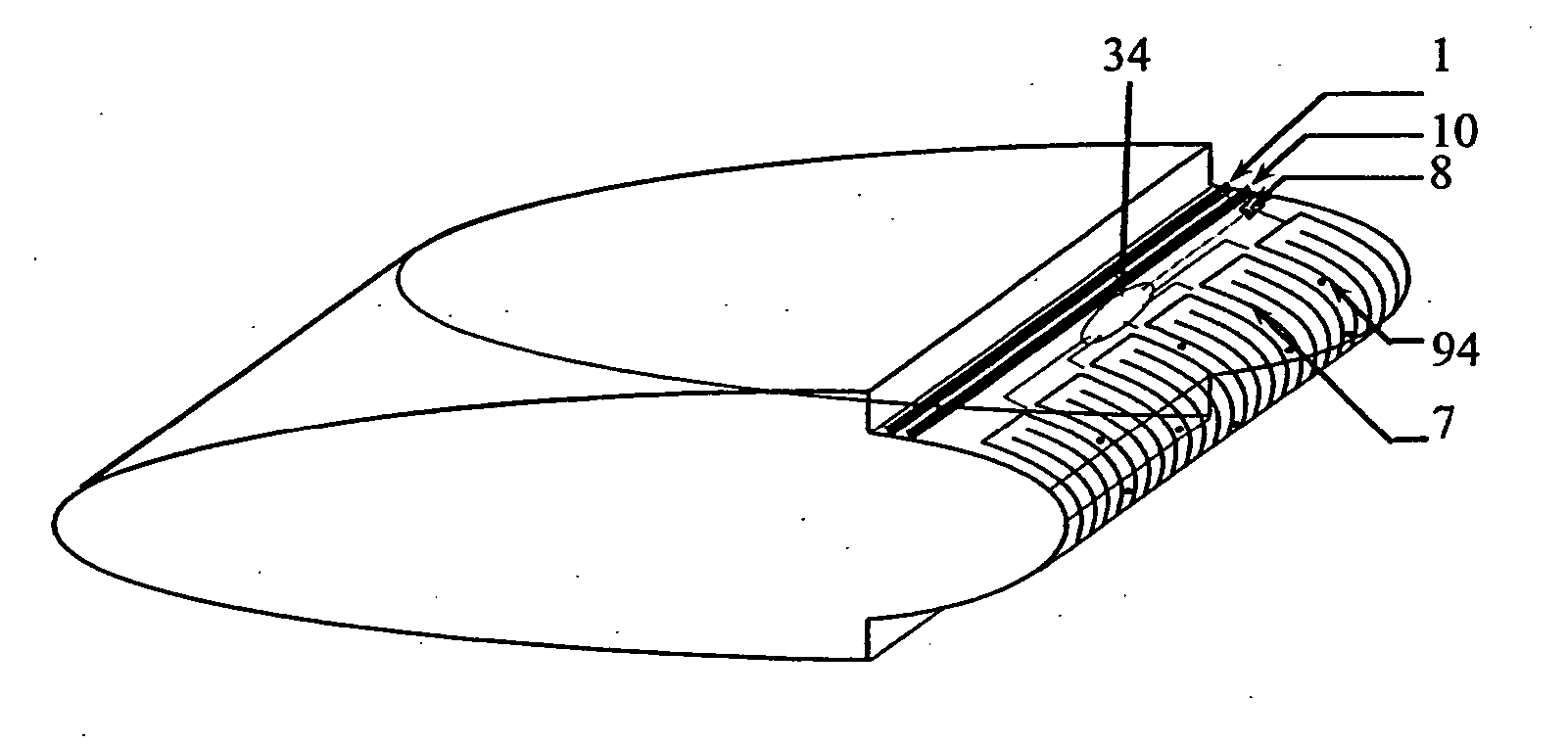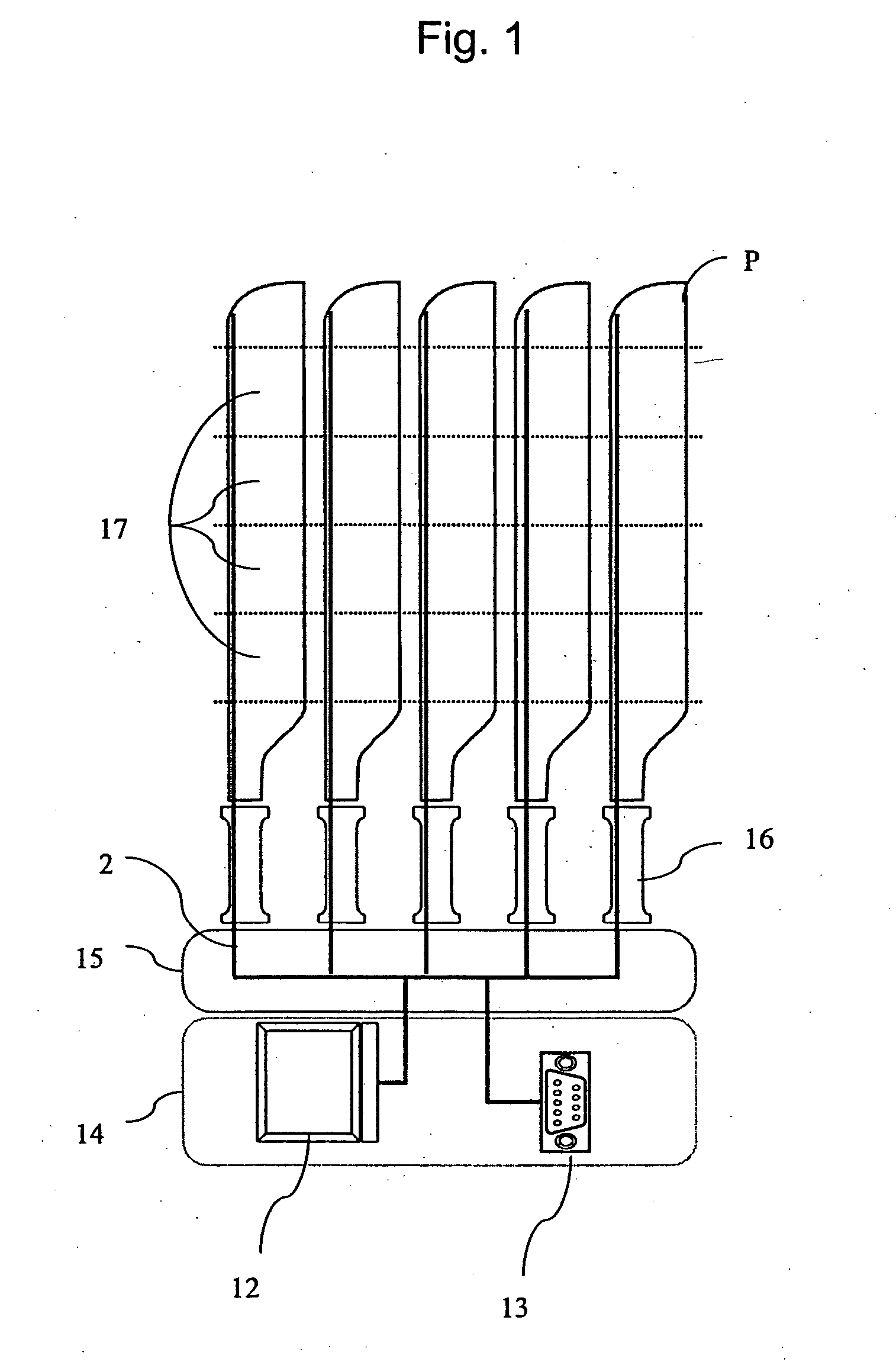Modular anti-icing/de-icing device for an aerodynamic surface
- Summary
- Abstract
- Description
- Claims
- Application Information
AI Technical Summary
Benefits of technology
Problems solved by technology
Method used
Image
Examples
first embodiment
[0045]FIG. 2 shows a Each module 17 is fitted with a first regulator unit 21, e.g. a peripheral microprocessor. This first regulator unit 21 receives a first measurement signal from a temperature sensor 91 and a first monitoring signal from an ice sensor 111 in order to control a first heater element 51. All of these components are provided with respective CAN interfaces and they are connected to the main communications means 2.
[0046] The system relies on the single main communications means 2 which makes it much easier to implement. In addition, all of the modules 17 in a given blade are powered by a single electrical power supply means 1, e.g. an electrical power supply cable.
second embodiment
[0047]FIG. 3 shows a Each module 17 is provided with a second regulator unit 32, e.g. a microcontroller, connected to the main communications bus 2 and provided with a CAN interface. This second regulator unit 32 receives a second measurement signal from a temperature sensor 92 and a second monitoring signal from an ice sensor 112 in order to control a second heater element 52.
[0048] In addition, by implementing a microcontroller, it is possible to achieve better integration of the peripheral elements (temperature sensors, ice sensors, and heater elements). Each of these peripheral elements is identifiable by its predefined connection to one of the pins of the microcontroller. The anti-icing / de-icing modules are completely independent. The microcontroller dialogs via the main communications means 2 with the central microprocessor 12 or the diagnosis connector 13, thereby facilitating tests and maintenance operations.
[0049] This second embodiment considerably reduces the number of ...
third embodiment
[0050]FIG. 4 shows a In this case, a third regulator unit communicates with all of the modules 17 of the blade. This third regulator unit 23 provided with two CAN interfaces, an auxiliary microprocessor for example, is disposed at the root of the blade. The two CAN interfaces enable a gateway to be established between the main communications means 2 and a secondary communications means 10 which is advantageously a bus using a both-way protocol. Consequently, the third regulator unit 23 is connected to the central microprocessor 12 via the main communications means 0.2, and also to the various anti-icing / de-icing modules 17 of the blade via the secondary communications means 10 specific to the blade.
[0051] Each module 17 is provided with a temperature sensor 93, an ice sensor 113, and a heater element 53, with each of these components being provided with a respective CAN interface enabling it to be connected to the secondary communications bus 10. These temperature sensors 113 and i...
PUM
 Login to View More
Login to View More Abstract
Description
Claims
Application Information
 Login to View More
Login to View More - R&D
- Intellectual Property
- Life Sciences
- Materials
- Tech Scout
- Unparalleled Data Quality
- Higher Quality Content
- 60% Fewer Hallucinations
Browse by: Latest US Patents, China's latest patents, Technical Efficacy Thesaurus, Application Domain, Technology Topic, Popular Technical Reports.
© 2025 PatSnap. All rights reserved.Legal|Privacy policy|Modern Slavery Act Transparency Statement|Sitemap|About US| Contact US: help@patsnap.com



